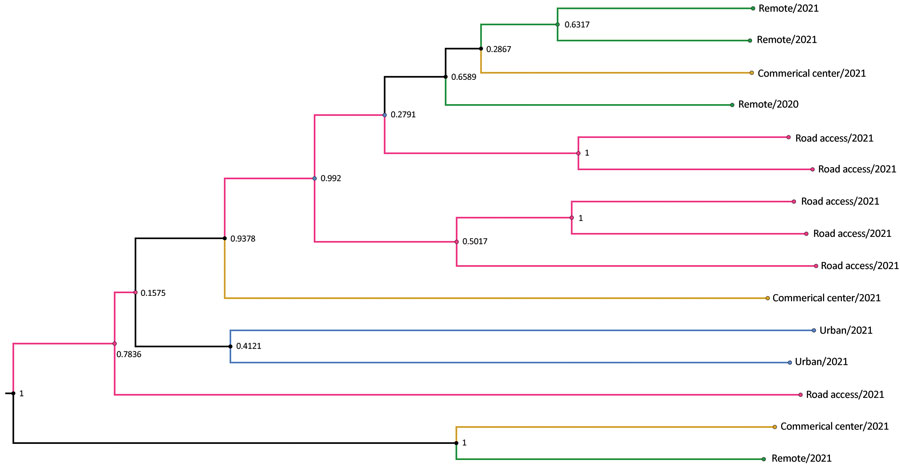Volume 29, Number 5—May 2023
Synopsis
Phylogenetic Analysis of Transmission Dynamics of Dengue in Large and Small Population Centers, Northern Ecuador
Figure 7

Figure 7. Subclade tree of dengue virus serotype 2 from rural communities of Esmeraldas Province in study of transmission dynamics of dengue in large and small population centers, northern Ecuador. Gradient of remoteness is classified as remote communities with no road access (green), communities with road access (pink), commercial center (yellow), and urban (blue). Subclade nodes are labeled with posterior probabilities generated in BEAST software (https://beast.community).
1These senior authors contributed equally to this article.
Page created: March 14, 2023
Page updated: April 18, 2023
Page reviewed: April 18, 2023
The conclusions, findings, and opinions expressed by authors contributing to this journal do not necessarily reflect the official position of the U.S. Department of Health and Human Services, the Public Health Service, the Centers for Disease Control and Prevention, or the authors' affiliated institutions. Use of trade names is for identification only and does not imply endorsement by any of the groups named above.